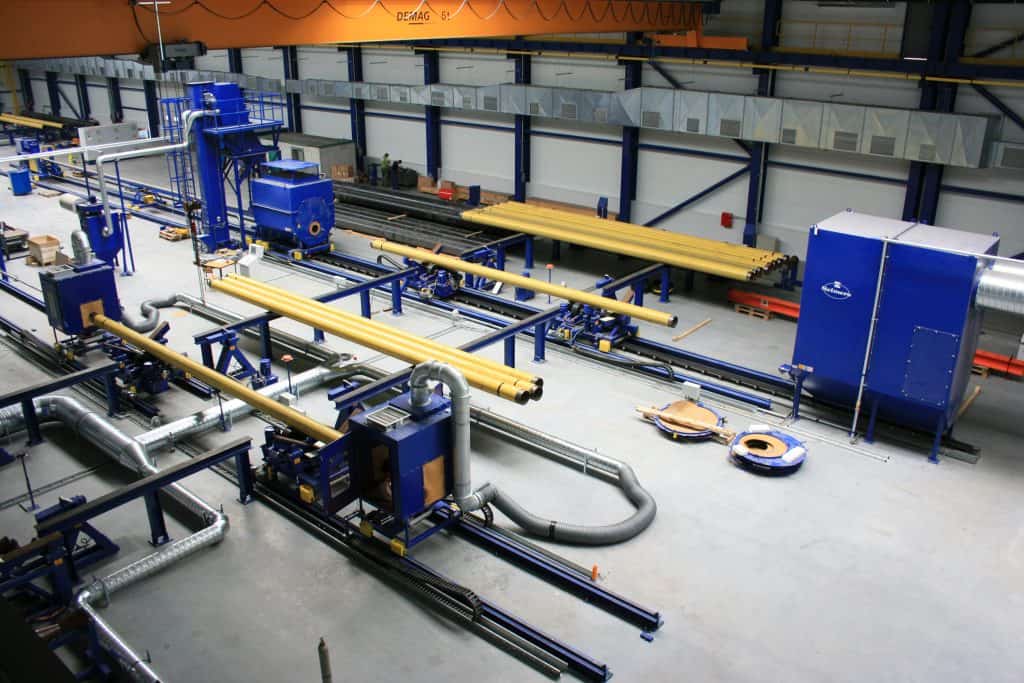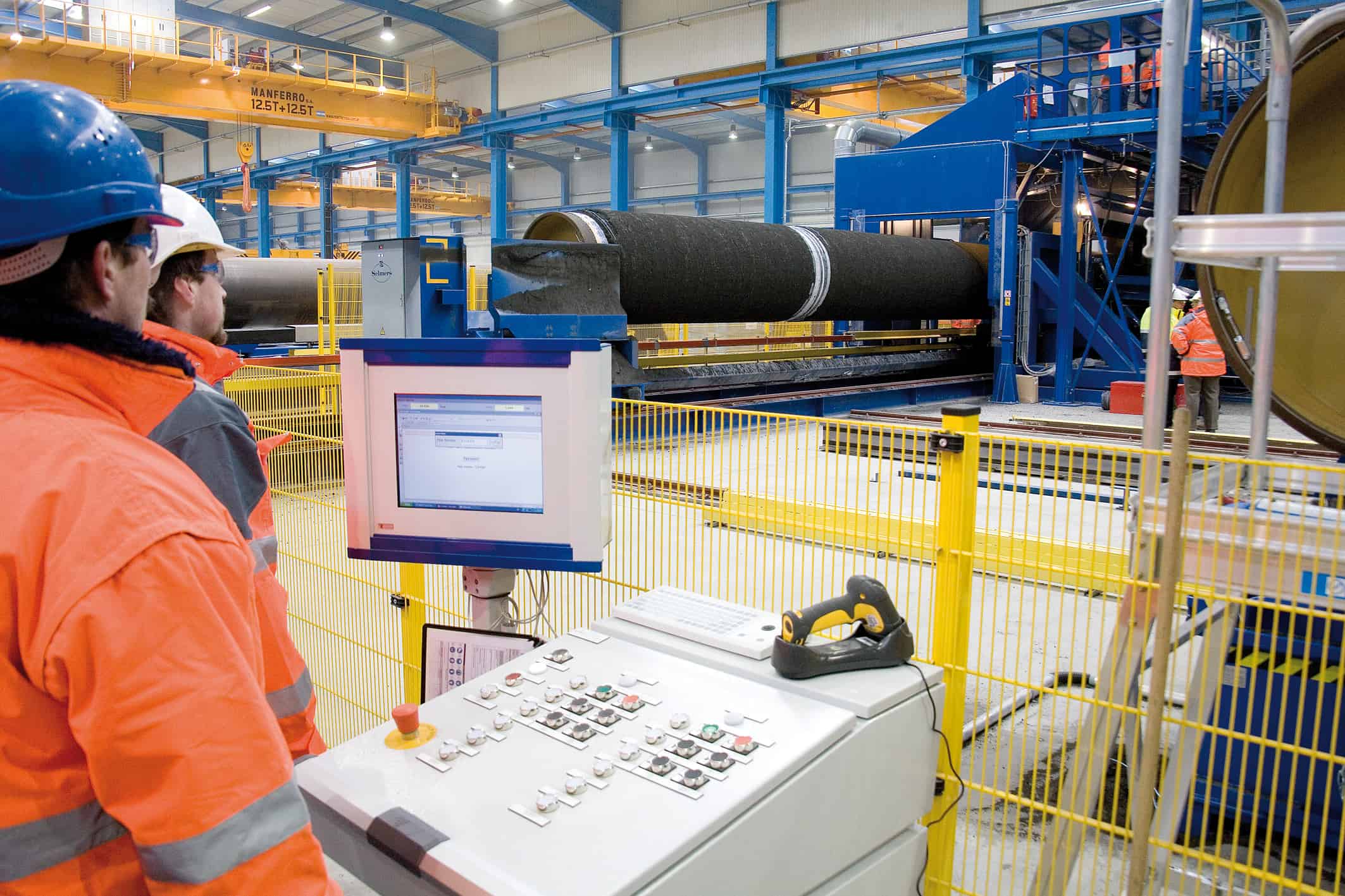Internal coating or lining of pipes is a common technology to protect steel pipelines against corrosion or to reduce flow friction. It is widely used in (long distance) transport lines for oil, gas, fuel, condensate, chemicals, potable- or industrial water, sewage, outfall pipes and drilling pipes. Depending on the transport medium, its aggressiveness and other specific demands, different kinds of coatings can be applied such as:
- Cold or hot epoxies (solvent based or solvent free)
- Fusion Bonded Epoxy powder (FBE)
- Polyurethanes
How it Works
The lining can be applied in different thicknesses and in one or more layers, as specified in the pipe coating standard or recommended by the manufacturer. In very special cases, primer may be required. For virtually all media transported through pipelines, specific linings have been developed by coating material suppliers. Internal coating has to be applied on a clean, dry, dust & oil free pipe surface. To obtain such surface, pipes must be abrasive blasted, possibly preceded by internal washing and/ or pre-heating. After the coating has been applied, post-heating of the pipe may be
executed to increase the curing speed ofthe lining.
The Full Scope:
Internal Blasting Equipment:
Internal Heating System (gas-fired)
Internal Blasting System (mech./pneum.)
Blow-Out System (abrasive removal)
Cleaning Equipment
Internal Lining Equipment
Internal Pipe End (de-)Masking System
Internal Coating System (Liquid Epoxy PU or Powder Coating (FBE))







